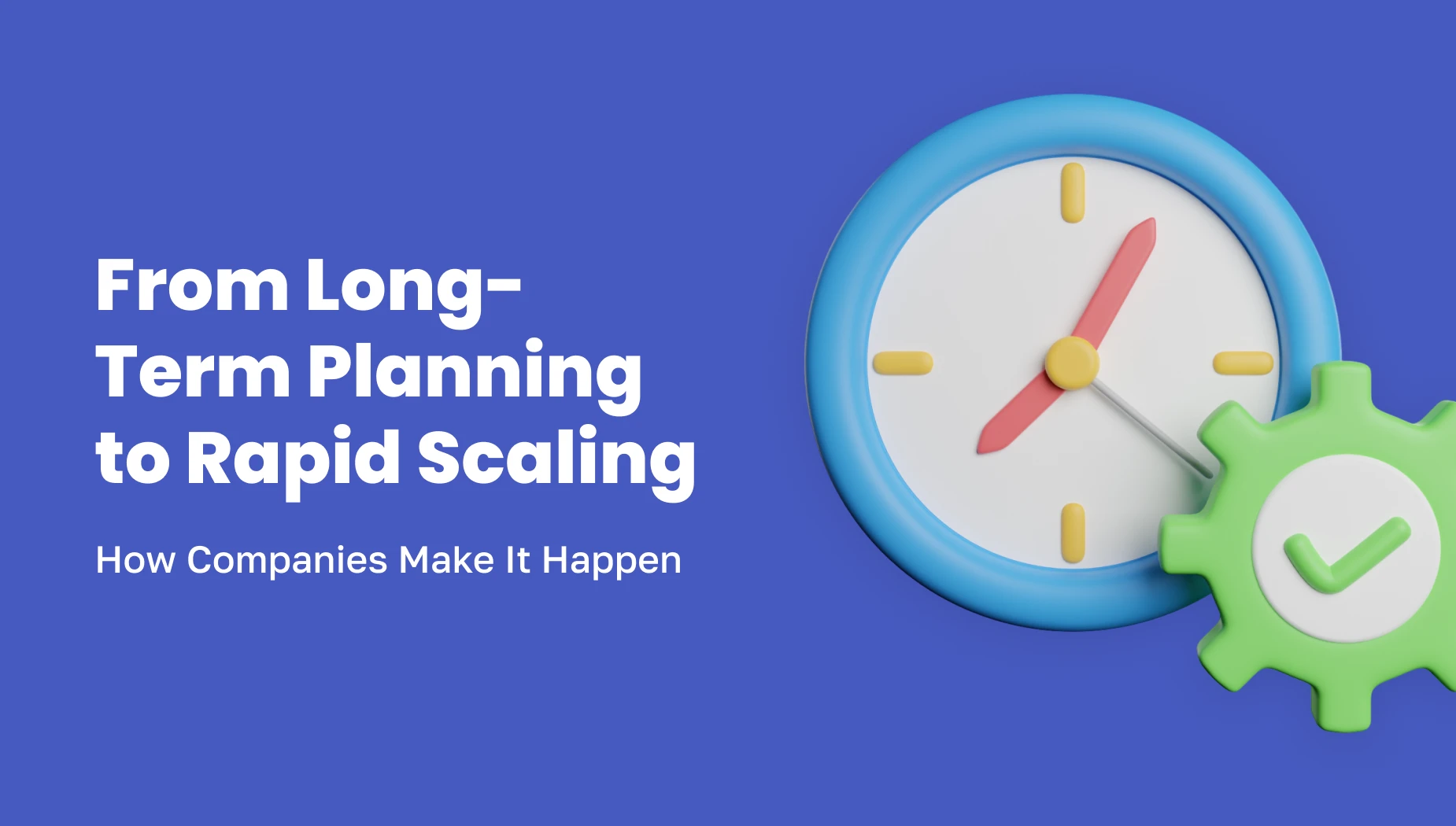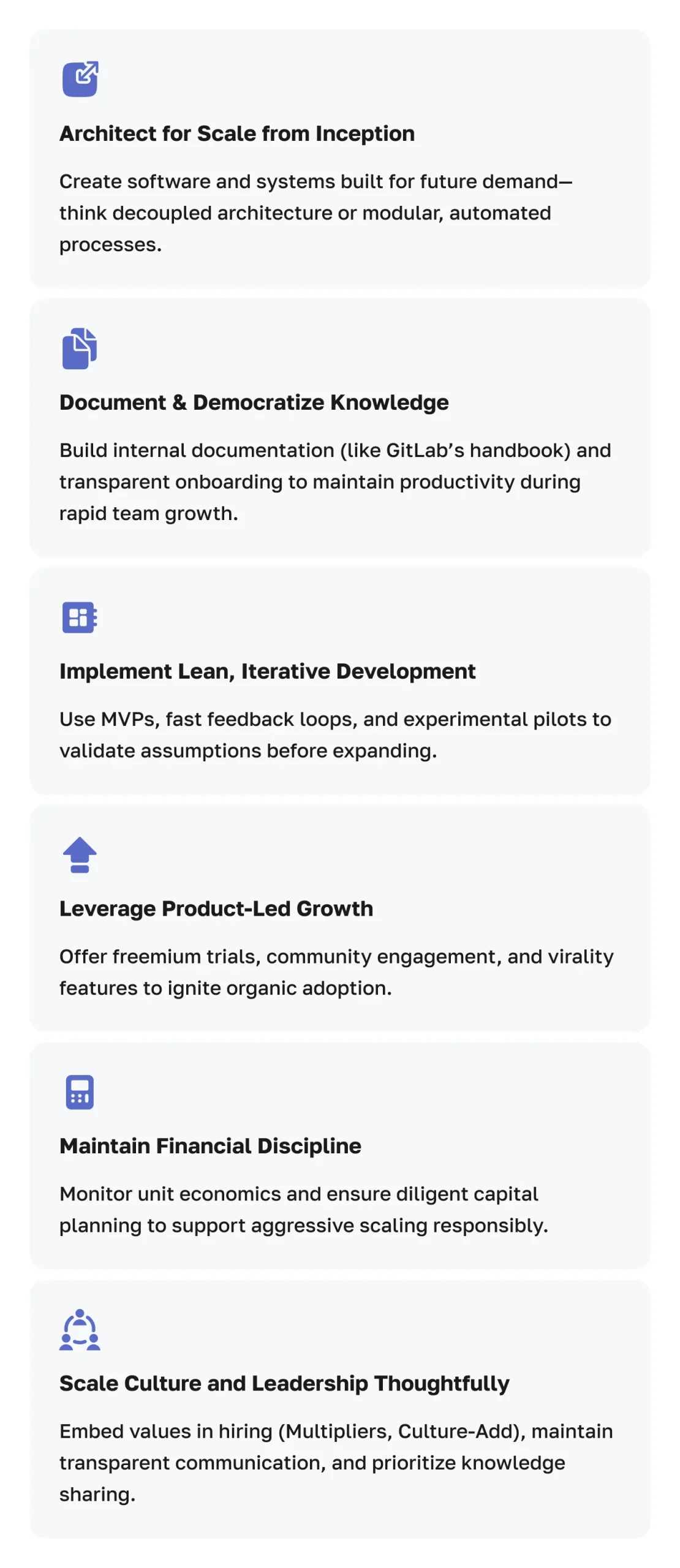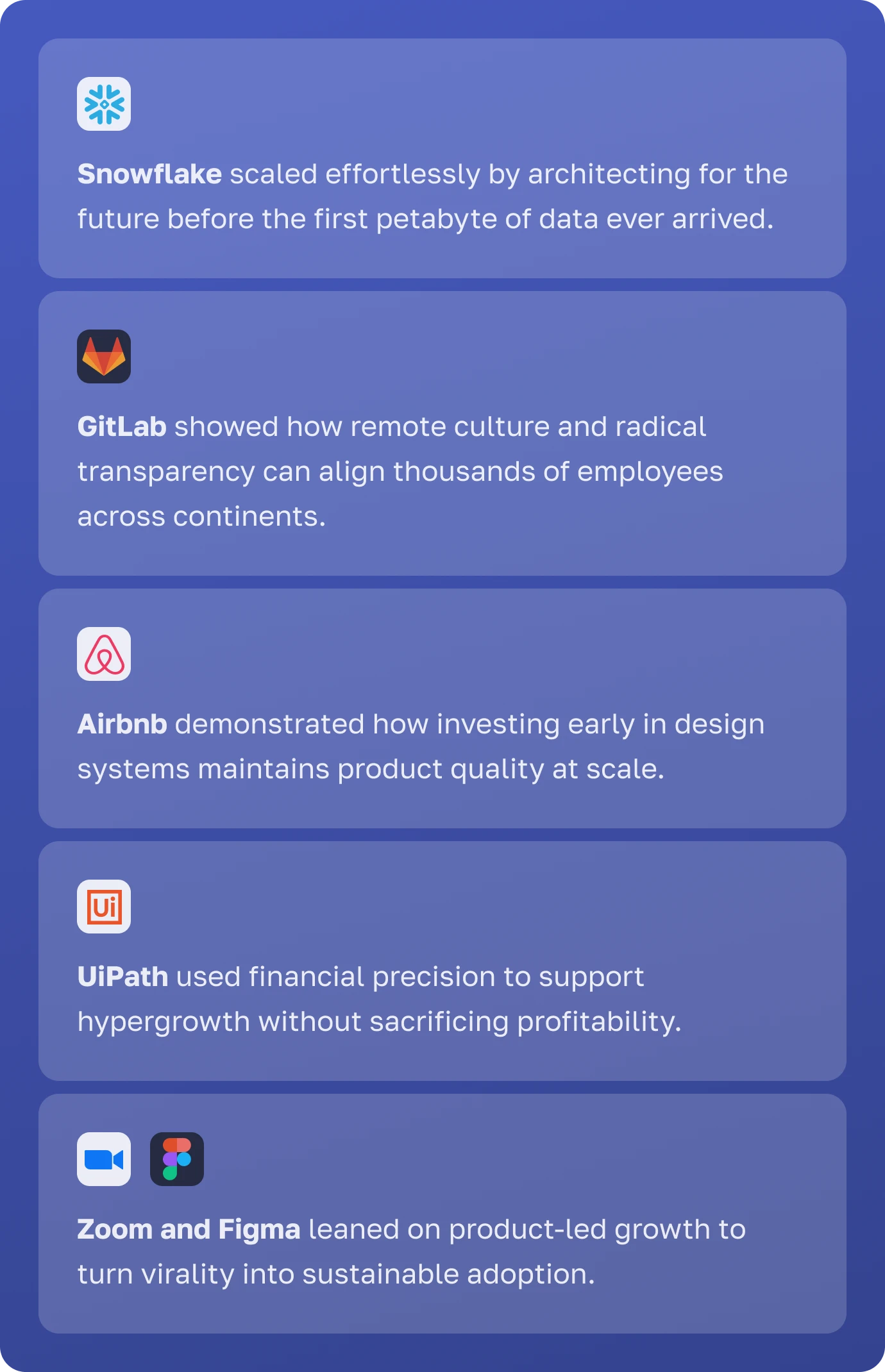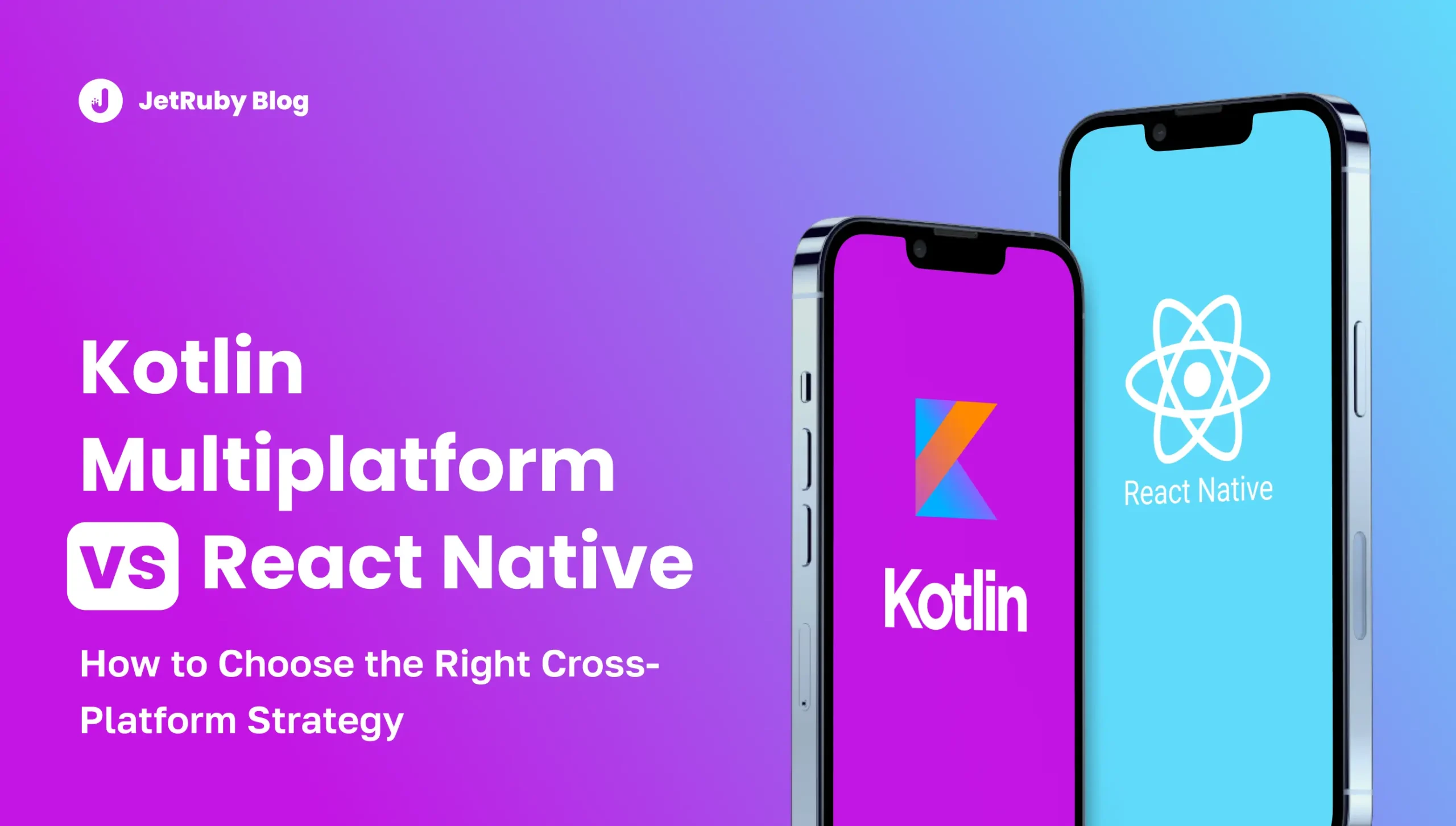Table of Contents
Transitioning from meticulous long-term planning to executing aggressive, scalable growth strategies is one of the most pivotal challenges for businesses. Jetruby’s case study explores how visionary leadership, robust frameworks, and prudent execution allow companies to convert strategic foresight into tangible, fast-paced expansion.
1. Laying the Foundation: Strategic Long-Term Planning
Successful scaling begins with a long-term vision and strategic architecture. Companies like Snowflake deliberately designed their system architecture to support horizontal scaling from day one. By decoupling storage and compute and implementing a multi-cluster shared data architecture, Snowflake enabled seamless growth from gigabytes to petabytes without major redesigns.
Successful scaling starts with a long-term vision and strategic architecture. JetRuby exemplifies this with a modular, future-proof design — see their blog on integrating Webpack with Rails for SPA to support maintainability and loading efficiency.
2. Building Organizational and Cultural Infrastructure
Planning ahead means creating scalable structures that stimulate agility.
- GitLab’s remote-first model relied on a 12,000-page handbook, asynchronous processes, full transparency, and structured onboarding — ensuring cohesion and efficiency with a distributed team of 1,500+ across 65+ countries Institute of Enduring Growth.
- When Airbnb began expanding globally, one of its biggest challenges was keeping the user experience consistent while dozens of product teams shipped new features simultaneously. Without clear standards, design elements could easily become fragmented — different button styles, inconsistent typography, or uneven layouts — creating friction for both users and developers.
To solve this, Airbnb invested early in a Design Language System (DLS) — a centralized framework of reusable UI components, typography rules, spacing guidelines, and interaction patterns. The DLS wasn’t just a visual style guide; it was a living system tightly integrated into the company’s development workflow.
- Zalando implemented process automation and data-driven inventory management to sustain its cross-Europe logistics operations as it scaled, transitioning from nimble product innovation to full-scale e-commerce maturity Medium.
Scalability depends on structures that support clarity and collaboration. JetRuby stimulates growth through accessible knowledge-sharing, including technical storytelling — like in “Rise of the Machines: Building an iOS App to Control a Balancing Robot”—which democratizes learning and scales team capabilities.
3. Adopting Lean and Agile Scaling Practices
Efficient scaling requires responsive methodologies:
- Dropbox embraced the Lean Startup model: building an MVP, iterating via direct user feedback. In just 15 months, registrations surged from 100,000 to over 4 million users Medium.
- Ericsson, amid a transition to large-scale agile, used an experimental, step-by-step transformation strategy—piloting agile teams, then gradually unifying processes and introducing automation, rather than a disruptive “big bang” overhaul SpringerLink.
JetRuby emphasizes clean, maintainable codebases to enable agile iteration. Our “Refactor Like A PRO” guide outlines structured refactoring practices using tools like RuboCop and Flay—a great blueprint for sustainable code evolution.
4. Scaling with Product and Market Dynamics
Turning long-term strategy into rapid scaling often hinges on product-market alignment:
- Figma leveraged product-led growth with a freemium model, network effects, and strong community support. These strategies drove adoption, retention, and ultimately led to its $20 billion acquisition by Adobe.
- Zoom built a reliable, user-friendly product, deployed a freemium model with viral sharing mechanics, and emphasized operational excellence. This enabled rapid user adoption and growth while maintaining profitability.
Enterprise integrations can hinder agility — unless executed cleanly. JetRuby’s SAP Business One + Rails integration breakdown illustrates how to manage forward/backward sync, use DI‑API, and support mobile clients with efficient data flows, making complex enterprise setups accessible and scalable.
5. Optimizing Through Financial and Operational Discipline
Managing growth sustainably requires financial foresight:
- UiPath tracked detailed unit economics, implemented advanced financial planning tools early, monitored capital efficiency metrics, and raised funds proactively. This allowed it to scale from $1M to $100M in ARR in under 21 months, culminating in a successful IPO and valuation of over $35 billion.
6. Step-by-Step Synthesis: The Jetruby Blueprint
Here’s how a company like Jetruby might turn strategic long-term planning into actionable, scalable success:
- Architect for Scale from Inception
Create software and systems built for future demand—think decoupled architecture or modular, automated processes. - Document & Democratize Knowledge
Build internal documentation (like GitLab’s handbook) and transparent onboarding to maintain productivity during rapid team growth. - Implement Lean, Iterative Development
Use MVPs, fast feedback loops, and experimental pilots to validate assumptions before expanding. - Leverage Product-Led Growth
Offer freemium trials, community engagement, and virality features to ignite organic adoption. - Maintain Financial Discipline
Monitor unit economics and ensure diligent capital planning to support aggressive scaling responsibly. - Scale Culture and Leadership Thoughtfully
Embed values in hiring (Multipliers, Culture-Add), maintain transparent communication, and prioritize knowledge sharing.
How JetRuby Makes It Happen
JetRuby combines strategic foresight with agile execution to support rapid, sustainable growth. By designing modular systems with tools like Webpack and ActionCable, the team builds architectures that scale effortlessly. Knowledge-sharing is central — from robotics experiments turned BLE-powered apps to refactoring guides that boost code clarity.
JetRuby simplifies complex integrations, such as connecting SAP with Rails, and adapts to global markets through smart localization strategies. With DevOps tools like PagerDuty and NewRelic, operational resilience is built in. The result: a repeatable blueprint for scaling teams, systems, and success.
Conclusion
The journey from long-term strategic planning to rapid, scalable growth is rarely linear. The companies highlighted prove that success lies at the intersection of foresight, structural discipline, and iterative agility.
- Snowflake scaled effortlessly by architecting for the future before the first petabyte of data ever arrived.
- GitLab showed how remote culture and radical transparency can align thousands of employees across continents.
- Airbnb demonstrated how investing early in design systems maintains product quality at scale.
- UiPath used financial precision to support hypergrowth without sacrificing profitability.
- Zoom and Figma leaned on product-led growth to turn virality into sustainable adoption.
At the core of all these stories lies a common truth: systems, culture, and strategy must evolve together.
JetRuby embodies this philosophy. By combining modular architectures, agile development practices, transparent knowledge-sharing, and operational resilience, JetRuby delivers a repeatable blueprint for scaling — one that balances speed with stability, vision with execution, and ambition with sustainability.
For any organization looking to move from deliberate planning to exponential growth, the message is clear: scale isn’t an accident — it’s engineered.
Ready to Turn Vision into Scalable Growth?
JetRuby helps companies architect systems, streamline processes, and scale with confidence.
[Book a Free Consultation]






